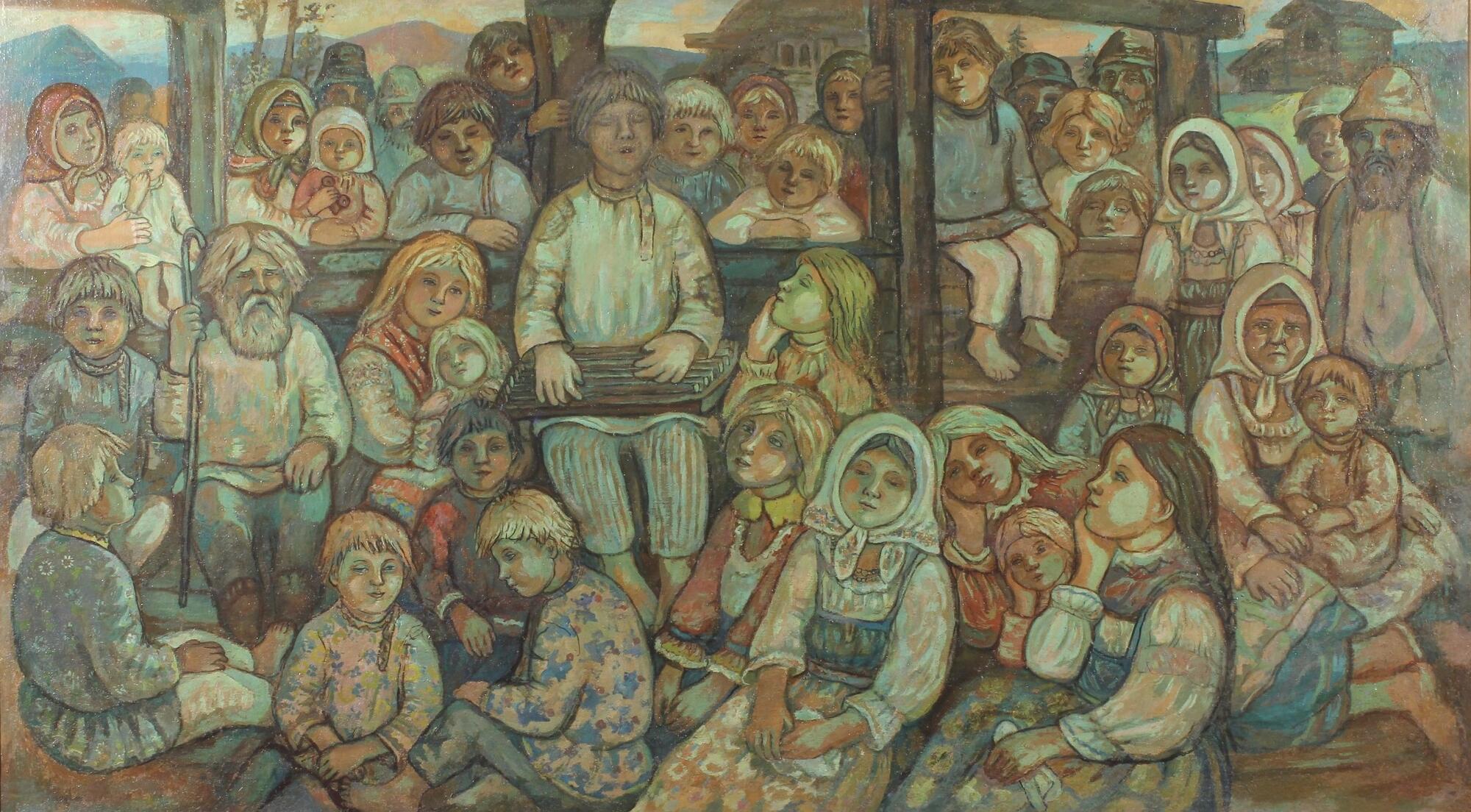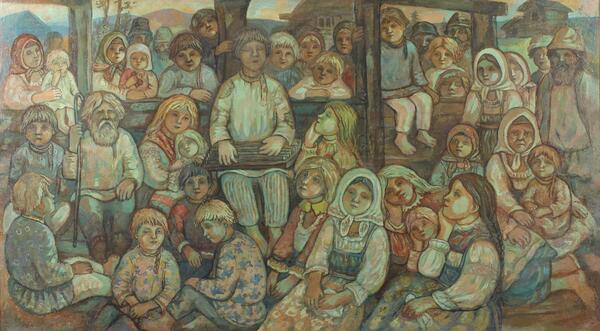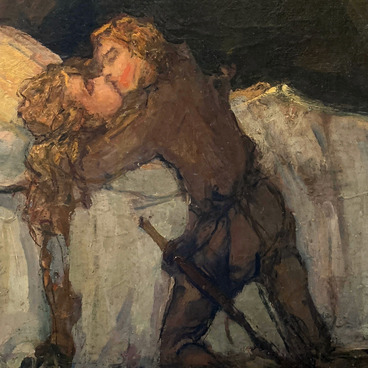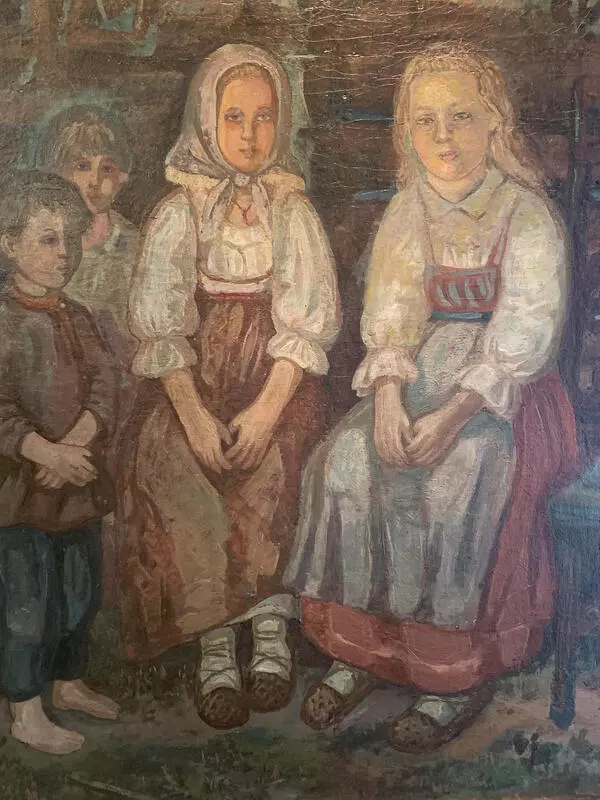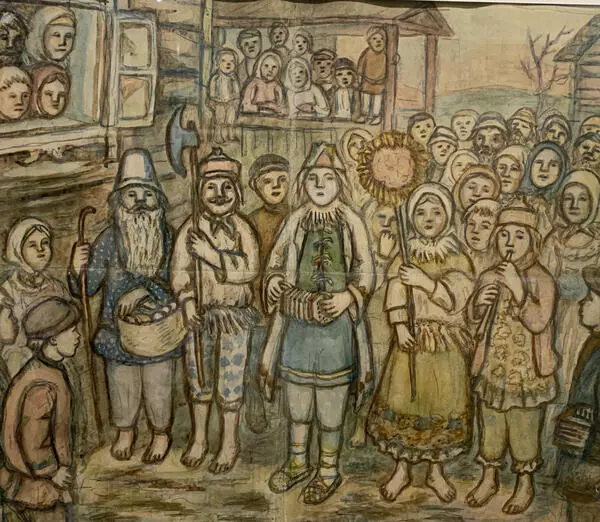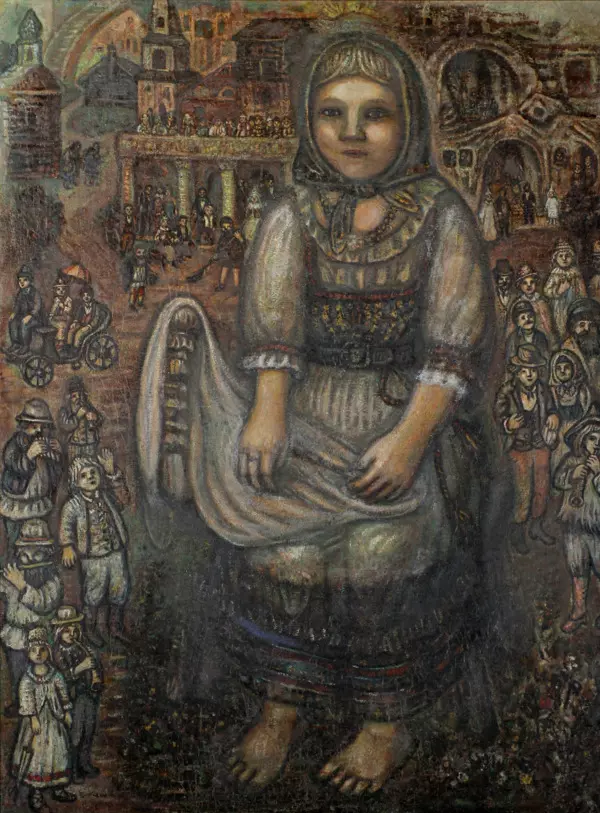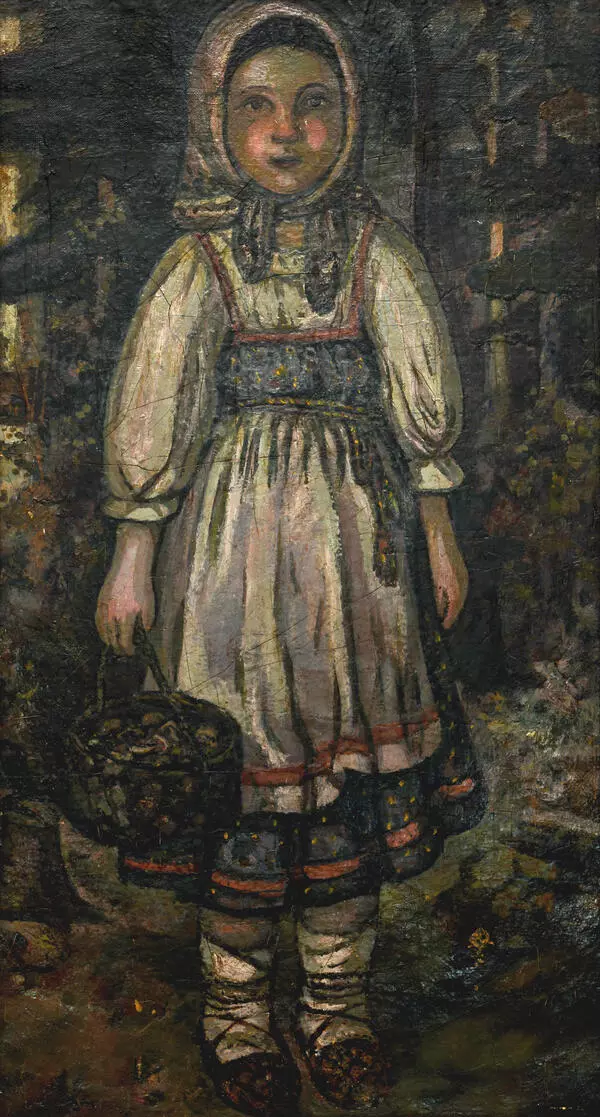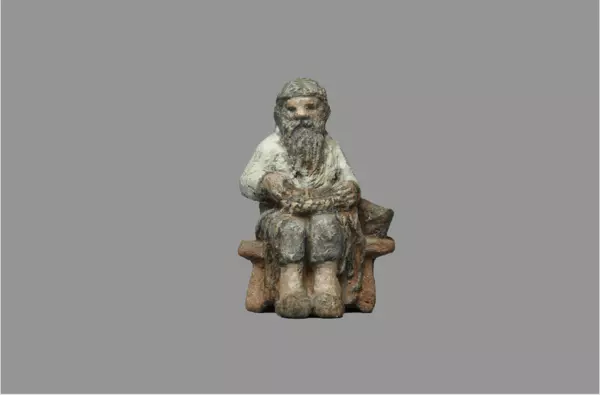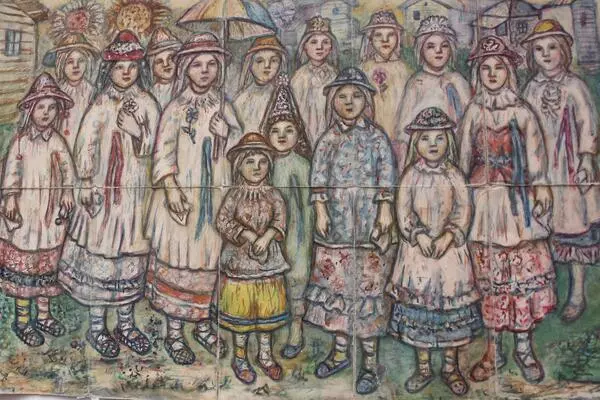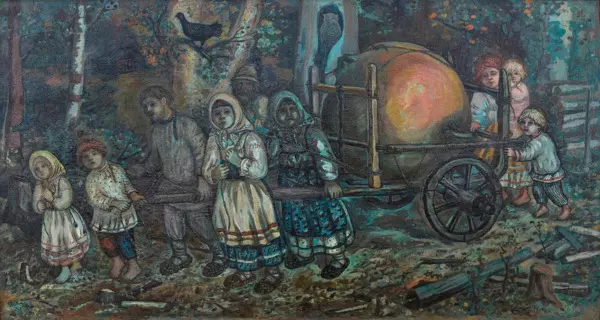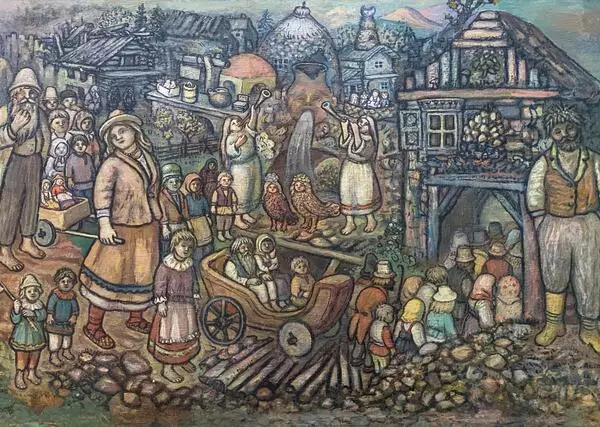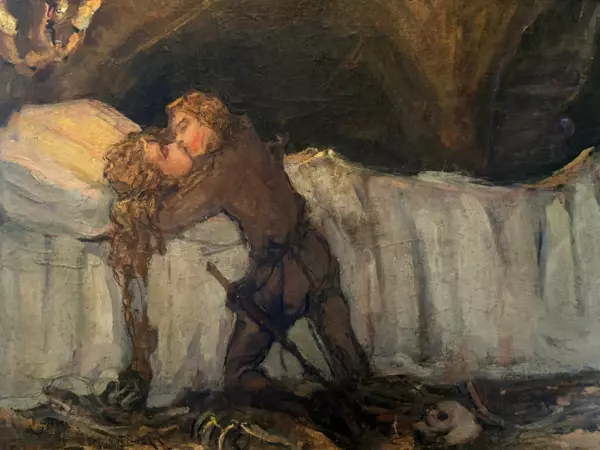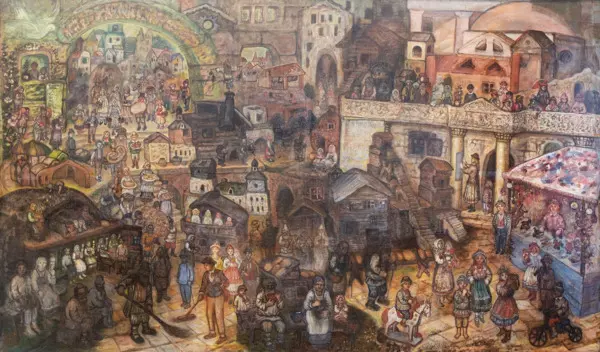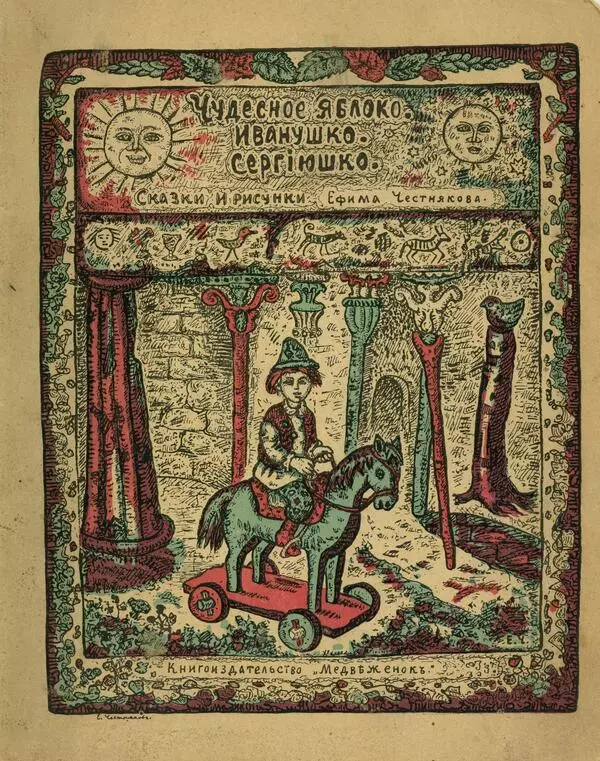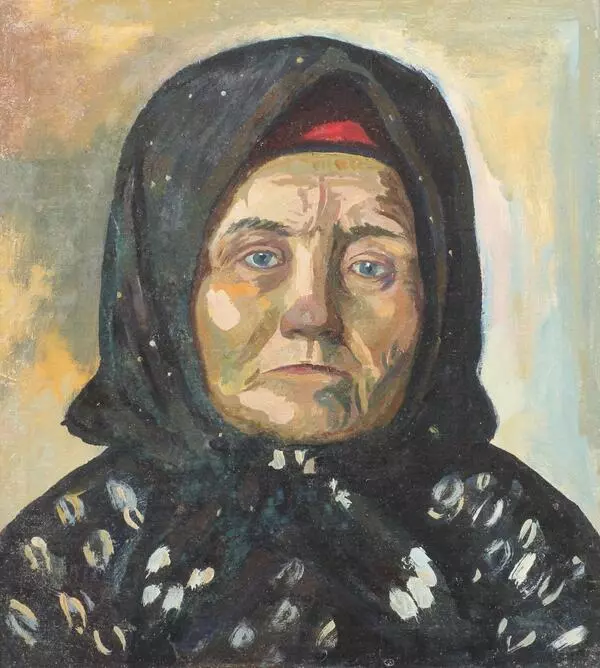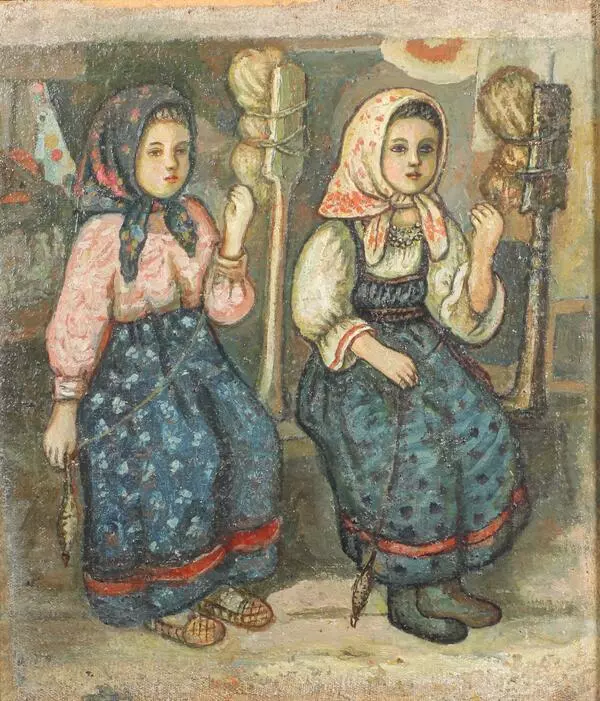In Yefim Chestnyakov’s works of art, elements of folklore and literature, as well as reality and magic seamlessly combine together. The artist has found his own language of communication, which was extremely simple, clear and easy to read. Still, the apparent clarity and lack of complexity were only achievable within the framework of universal culture, which, in his eyes, he was building. All of his creations, including literary works, paintings and drawings, had roots in folk culture. Folk songs were an inspiration for much of his art. The artist most often performed his songs to children.
Yefim Chestnyakov was able to subtly portray a whole range of children’s moods. The painting ‘Listening to gusli’ could be referred to as a notable example of the artist’s ability to convey emotional states of adults and children. Its composition, subject matter and color scheme are all unified. The scene portrayed unfolds in front of the viewer. The artist positioned the boy playing the gusli (a Slavic multi-string plucked instrument) at the center of the canvas, seemingly pointing out the key figure in the scene. His place at the center is further accentuated by the slightly elevated porch and heads of listeners forming a semi-circle around it. People standing behind the musician are leaning on the fence while the movement of his hands seemingly completes the circle.
The artist’s main focus is on the faces of the people. They appear to have been smoothed out by the melody. Practically everything and everyone is under the spell of the music. Everyone around is perfectly still, listening with rapt attention. Soft half-smiles on the people’s faces convey their enjoyment of the music, whose rhythm they are nodding their heads to with their eyes closed. Their thoughts appear to follow the sounds. The figures seem to be listening not only to what the musician is playing but also their inner responses to the music. Gusli is a special instrument, and, as we know, it is used exclusively to perform epics and fairy tales. For instance, Sadko, a guest from Novgorod, used it to play his dance and energetic tunes.
In Yefim Chestnyakov’s art work, the entire audience appears to be completely absorbed in the fairly quiet melody. Judging by their faces, one perceives just how attentively and reverently they are listening to every word of the tale and song performed by the gusli player Above the people’s heads, the evening sky is turning pink as the sun is setting. Such phenomena are a rarity in Yefim Chestnyakov’s paintings. It is an interesting and uncommon sign in his works. Only in the evening, at dusk, peasants, having finished all of their hard daily tasks, could truly let themselves and their minds and souls relax.
Yefim Chestnyakov was able to subtly portray a whole range of children’s moods. The painting ‘Listening to gusli’ could be referred to as a notable example of the artist’s ability to convey emotional states of adults and children. Its composition, subject matter and color scheme are all unified. The scene portrayed unfolds in front of the viewer. The artist positioned the boy playing the gusli (a Slavic multi-string plucked instrument) at the center of the canvas, seemingly pointing out the key figure in the scene. His place at the center is further accentuated by the slightly elevated porch and heads of listeners forming a semi-circle around it. People standing behind the musician are leaning on the fence while the movement of his hands seemingly completes the circle.
The artist’s main focus is on the faces of the people. They appear to have been smoothed out by the melody. Practically everything and everyone is under the spell of the music. Everyone around is perfectly still, listening with rapt attention. Soft half-smiles on the people’s faces convey their enjoyment of the music, whose rhythm they are nodding their heads to with their eyes closed. Their thoughts appear to follow the sounds. The figures seem to be listening not only to what the musician is playing but also their inner responses to the music. Gusli is a special instrument, and, as we know, it is used exclusively to perform epics and fairy tales. For instance, Sadko, a guest from Novgorod, used it to play his dance and energetic tunes.
In Yefim Chestnyakov’s art work, the entire audience appears to be completely absorbed in the fairly quiet melody. Judging by their faces, one perceives just how attentively and reverently they are listening to every word of the tale and song performed by the gusli player Above the people’s heads, the evening sky is turning pink as the sun is setting. Such phenomena are a rarity in Yefim Chestnyakov’s paintings. It is an interesting and uncommon sign in his works. Only in the evening, at dusk, peasants, having finished all of their hard daily tasks, could truly let themselves and their minds and souls relax.
